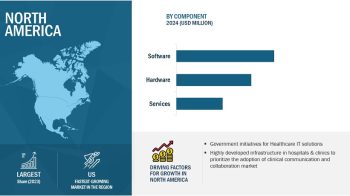In vitro fertilization (IVF) is used to treat infertility. This technology utilizes various fertility medications, medical devices, surgeries, or a combination of all.
Growth in the in vitro fertilization market is likely to be centered in the Asia-Pacific region. Factors such as high maternal age in Japan, abolishment of China’s one child policy, rising fertility tourism in India and Thailand, growing surrogacy and high prevalence of PCOS in India and growing number of ART procedures in Australia and New Zealand are propelling the IVF market in this region.
As per the Central Intelligence Agency, Japan’s average age of mothers at first child birth is high-30.3years in 2012. This is a major factor responsible for the declining fertility rate among women (Source: Sentakusuru Mirai Committee). According to estimates from the World Bank, the fertility rate in Japan decreased from 1.54 in 1990 to 1.4 in 2015. Delayed pregnancy in women is one of the major factors driving the adoption of IVF treatment in Japan, as the chances of conceiving decreases with age.
China’s fertility rate in 2015 was 1.6 births per woman, lower than the replacement level. In addition, the end of one-child policy is driving the rise in the demand for IVF treatment and procedures among younger and older women. For instance, in 2014, 700,000 women had IVF treatments (Source: Health Commission’s Women’s and Children’s Department), which is expected to rise in the next two years. Moreover, the shortage of sperms in sperm banks is leading the government to call for sperm donations. Thus, the abolishment of the one-child policy, coupled with government initiatives, is expected to aid the growth of the IVF market in China.
According to a survey conducted by Metropolis Healthcare (India), a multinational chain of pathology laboratory, approximately 18% of the women in India are suffering from PCOS in 2015. The lack of awareness and ignorance are the major factors attributing to the growth of this disorder in the country. Moreover, the cost of the surrogacy procedure is nearly USD 12,000 in India, whereas in the U.S. the procedure costs USD 70,000. This has significantly boosted the number of foreigners visiting the country for surrogacy. Also, the average cost of one IVF cycle in the U.S. is around USD 12,400 whereas in India, it costs USD 3,000. This is likely to support market growth in India.
Additionally, factors such as growing number of ART procedures in Australia and New Zealand, and rising fertility tourism in Thailand will trigger the IVF market in the APAC region.

